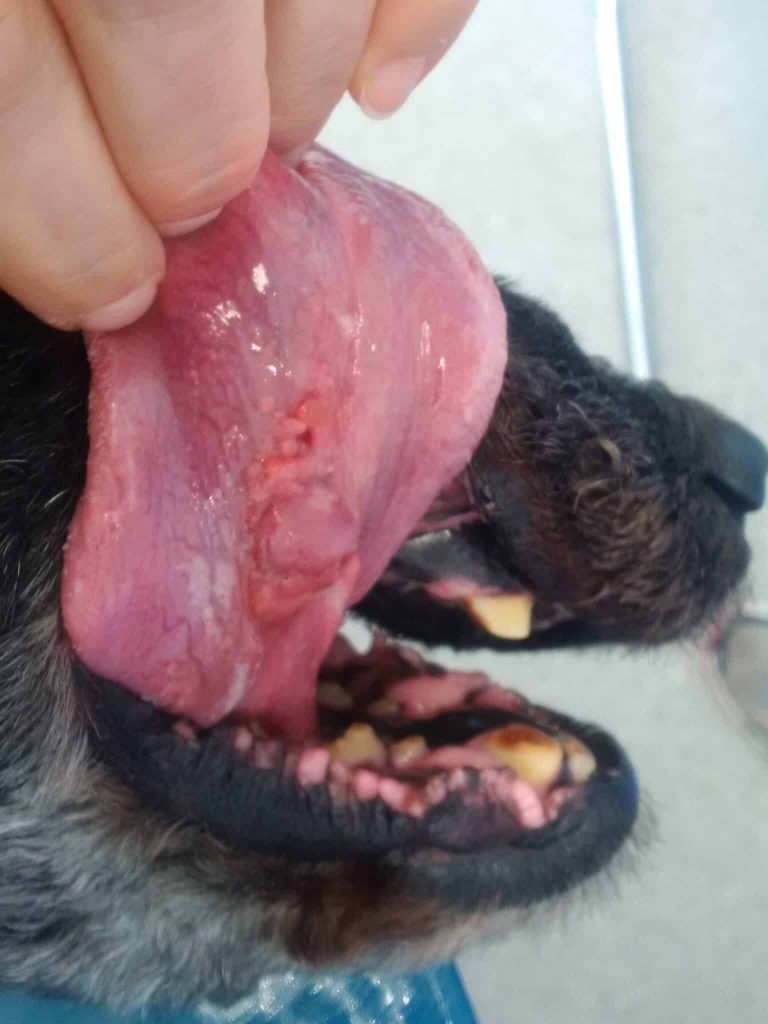Because I am a veterinarian, my friends constantly send me photos, videos and links to information about animals of all types. Recently, one of my friends sent me a link to a company that uses artificial intelligence to determine the best food for your dog by analyzing a photo your dog’s tongue. I told my friend I did not think this was a valid method of choosing food for their dog and that they should rely on input from their dog’s veterinarian. BUT, in the next email, my friend asked, do veterinarians ever look at the tongue for medical assessments? A great question, and one I will answer in today’s blogpost.
Dog and Cat Tongues Have Important Functions
Even though dogs and cats don’t speak, their tongue is a critical organ. It brings food into the mouth, grooms their coats, facilitates social interaction with other animals and with you! The tongue also allows animals to explore their environment. In dogs, panting and evaporation of saliva from the surface of the tongue helps keep them cool since dogs don’t sweat to cool off.
An Animal’s Tongue Color is Important
During a physical examination, the first thing your veterinarian will notice about your pet’s tongue is its color. In panting dogs, this is easily done. However, this is not so easy in shy or reluctant cats. Every cat owner and veterinarian knows firsthand the challenge of opening the feline mouth.
Once the tongue is visible, your veterinarian will hopefully see a pink tongue, which is normal. Yellow, white, and blue tongues are concerning, though they help direct the veterinarian in their physical examination and diagnostic evaluation. A yellow tongue, as in the photo above, indicates jaundice, which is most often a liver problem. A white tongue occurs in anemia, or a decrease of red blood cells. A blue tongue indicates a lack of oxygen from a heart or lung disorder. However, in some dogs, like Chow Chows, a blue tongue may be normal.
Bleeding from Your Pet’s Tongue
Dog and cat tongues are very mobile and have a large blood supply. Any injury to the tongue will likely result in bleeding. You see the underside of a dog’s tongue with an injury from chew on a bone. Dogs who raid trash cans commonly slice their tongues on tin can lids. Curious puppies will chomp on electric cords, and the resulting electrical shock can cause a severe burn to the tongue and serious facial swelling. Our 24/7 Level 1 Trauma Center handles these kinds of emergencies regularly and should be the first stop for any tongue-related injuries to tri-state area pets.
Checking Your Pet’s Tongue for Cancer
However, there’s another cause of bleeding from pet tongues – oral tumors. During nearly every physical examination I perform, I check both the top and bottom of the tongue for abnormalities. Fortunately, tumors of the tongue can be treated if found early. The type of tumor will dictate the exact treatment protocol, whether surgery, chemotherapy or radiation therapy. In the photos below, you can see the importance of a thorough tongue examination. In this patient, we found a tumor of the tongue while it was still small, and you can see AMC’s Surgical Oncologist Dr. Jonathan Ferrari’s successful removal and reconstruction of the tongue.
The tumor (small red dot) and the planned area for surgical removal
The reconstructed tongue post-surgery (top view)
The reconstructed tongue post-surgery (bottom view)
The Importance of Your Pet’s Taste Buds
Although this is not something I can see during an examination, we all know the tongue serves as an important sensory organ via the taste buds embedded in the tongue. Taste buds are responsible for your cat’s obsession with tuna, and you can read all about this in a previous blog.

